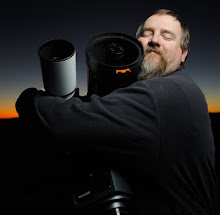
Mare Humorum: "On the north 'shore ' is one of the most beautiful and intensively observed lunar formation, the walled plain Gassendi, about 55 miles in diameter. It has a curious lop-sided appearance and its walls are quite high and complete except on the extreme south where there is a gap. It seems that in the remote past the fluid material of the Mare Humorum destroyed this part of the south wall of Gassendi and flooded the south part of the floor. At the center is a splendid group of mountain peaks, the highest of which rises to 4000 feet. On the south-east part of the floor is the remnant of what was probably once a nearly concentric interior ring. Gassendi is notable because of the variety of details on its interior, among which are about 30 or 40 clefts. Two of the most prominent of these diverge from the central mountains over the floor in a south-west direction. Associated with these are two craterlets that are very bright at full moon. These and other clefts in the south-west part of the floor are easily visible in a four inch telescope but the others that are on the east half of the interior need large apertures to be seen. They criss-cross or run parallel in a complex manner and cannot all be seen on any one occasion. Good seeing, the right angle of illumination and favorable libration are essential for their successful visualization. The cleft system has been charted by different observers and there is a strange diversity among the different delineations. In fact, it has been said: "Every Man his own Gassendi". The north wall of Gassendi is intruded upon by the crater Clarkson and just to the east of the wall of Gassendi is sliced through by two prominent gaps that continue across the floor as two parallel clefts. On the east wall is a curious crater-like depression from which extends on the outside in a south-east direction the Percy Mountains defining the north-east border of the Mare Humorum." The Moon Observer's Handbook by Fred W. Price.
I shot this on a breezy night at the dam with pretty good seeing (3-4/5) using the LPI in the LX200 with the TeleVue 2x barlows. I compared the Meade LPI side-by-side with the NexImage, and for lunar imaging the image differences are too close to call. The LPI does have a different pixel size, so it has less apparent magnification.

I finally captured the "C" Ring around Saturn, aka the Crepe Ring. It's a pretty low contrast feature, so I turned the gain up on the camera much higher than I had been. The down side is that the image is noisier than usual, but that's OK.
Truth is, I was pretty disappointed when I was shooting this since the capture was so noisy. I was sure that the whole thing was going to be sucky, so now I'm extra pleased.
NexImage/LX200/TV 2x barlows. 600/1000 stacked in KIS, final processing in Photoshop.





No comments:
Post a Comment